It’s no surprise that Quilotoa Crater Lake is often listed as one of the top 10 sights in Ecuador. Even though it’s sparring for notoriety with sweeping rainforest, the fascinating Galapagos Islands, and the rest of the soaring Andes mountains, this volcanic crater is nothing less than stunning.
Quilotoa Crater Lake has many things that make it unique and well worth a visit. For example, the crater sits nearly 13,000 feet high, and the journey through the mountains to reach it is nearly as beautiful as the final destination. And, of course, the ever-changing turquoise waters (caused by the volcanic minerals) and sweeping landscape are a once-in-a-lifetime view for many.
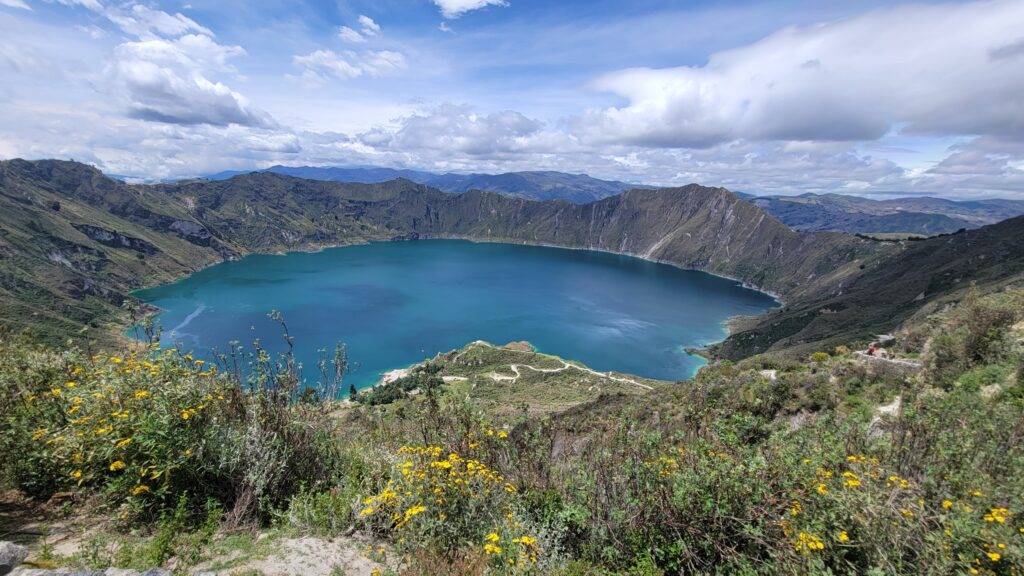
This particular crater is also rather unique because it’s owned and operated by the surrounding village! In an effort to distribute tourist income equally, the locals take care of the crater and have a variety of shops, cafes, and restaurants set up around town. So when you visit Quilatoa, you’re directly supporting the local economy!
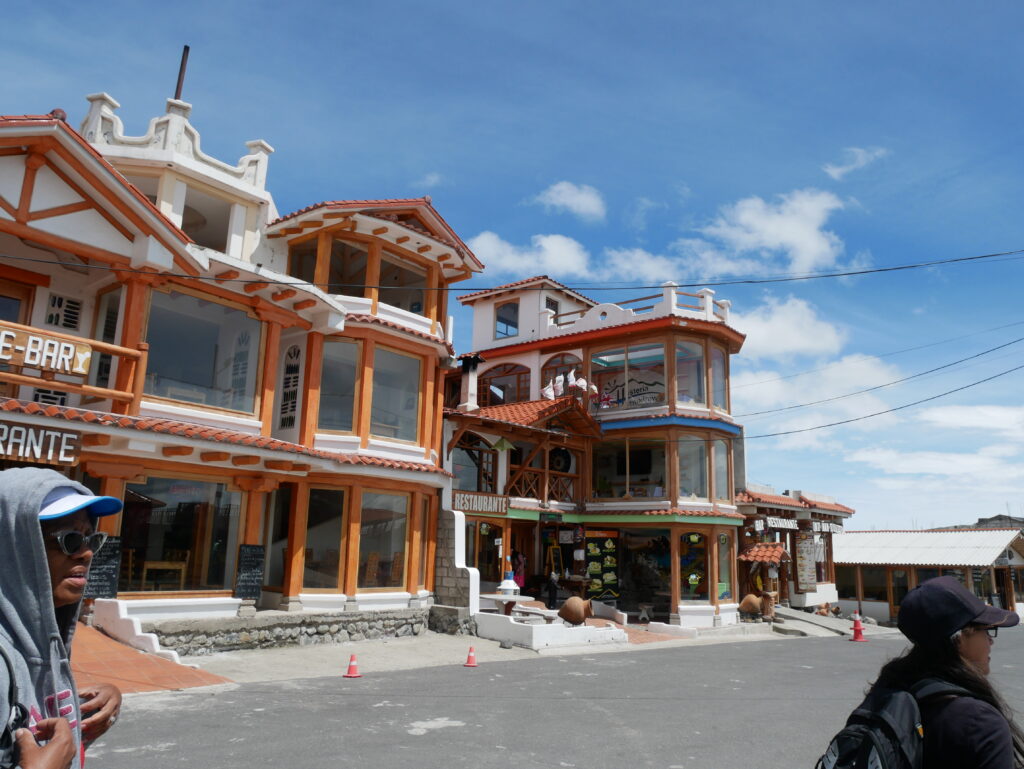
Now, many avid hikers will take on the Quilotoa Loop, which is a 22+ mile trek (depending on the route you take) from Sigchos to the Quilotoa Crater Lake. From what I’ve heard, it’s absolutely stunning–but that’s not what today is about. Today, I want to focus on the Quilotoa Crater Hike, which takes you down from the crater rim to the lake and back, as well as tell you a bit about the quaint town at the top.
Ready? Let’s dive in!
Preparing for Your Trip
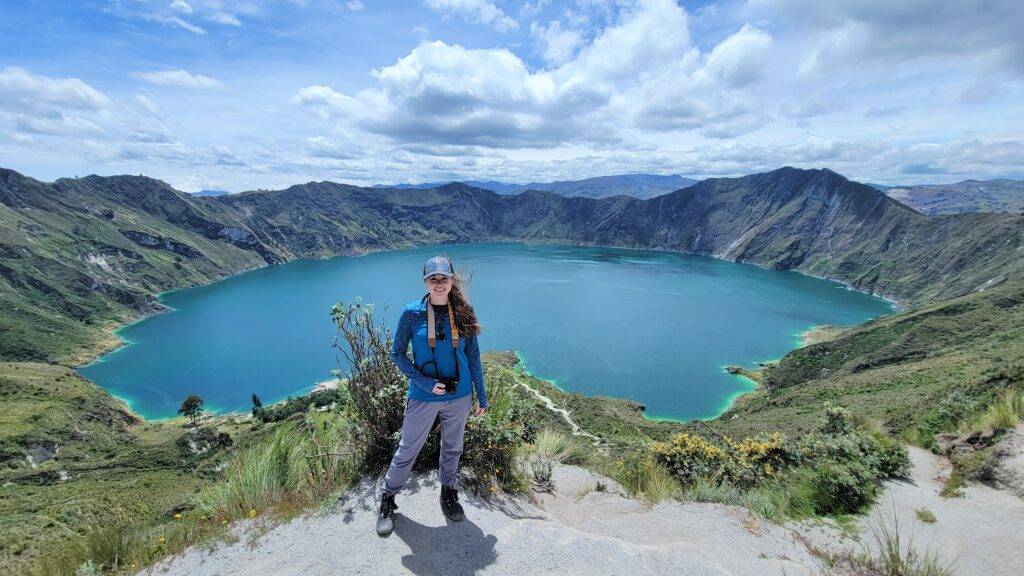
Because Quilotoa is so high in the mountains, it’s important to be prepared for the climate and altitude.
First of all, it can be incredibly windy here (especially at the top of the crater) and cold, so be sure to dress warmly and appropriately. I recommend a jacket and hiking pants–both to keep you warm and to protect you from the sun exposure. Even though we got a little toasty on our hike, we appreciated them as soon as we returned to the top of the crater.
You’ll also want a hat for extra sun protection. But keep in mind that the wind can easily sweep it away (I almost lost mine 3 times!), and choose one that you can fasten somehow.
Secondly, it’s important to prepare for the change in altitude. It’s very common for tourists to get sick because of the high altitude and experience nausea, fatigue, headaches, and shortness of breath. What a way to ruin a perfect day! So before you visit Quilotoa, take some altitude sickness medication (you can buy it on Amazon for cheap), and make sure to bring plenty of water to help you stay hydrated.
Getting to Quilotoa Crater Lake
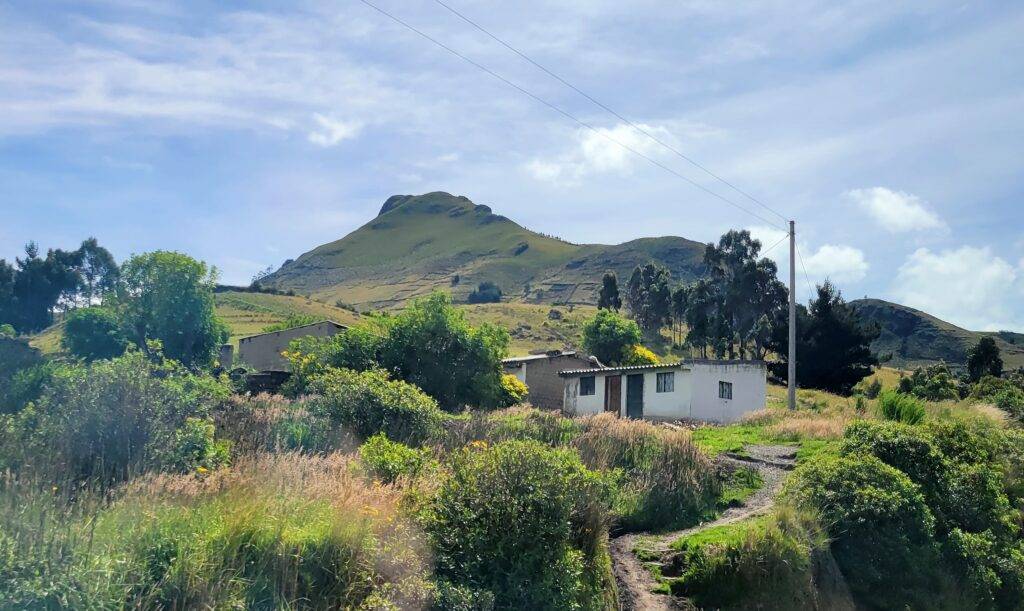
The most common way to visit this stunning volcanic lake is from the capital city of Quito. It takes about 3 hours to get from Quito to Quilotoa via the Panamerican Highway and the regional road up the mountain. Obviously, this is quite a trek (before the actual trek), but the views are wonderful and make for a very enjoyable drive. You’ll also pass several volcanoes, which is quite a unique experience!
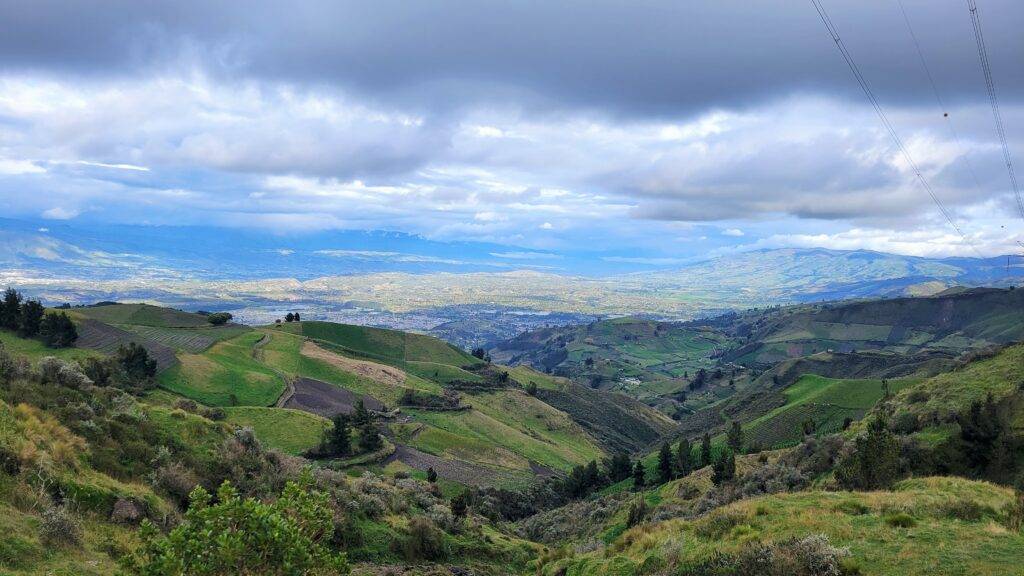
While you can certainly rent a car and drive to Quilotoa on your own, I highly recommend visiting with a scheduled day tour. You’ll get to enjoy the panoramic views from a comfy bus or van, and you may get to make a few fun stops along the way as well. For example, we stopped at a traditional market and the gallery of Tigua’s first painter, Julio Toaquiza Tiagasi. As a local, our guide was also invaluable in translating, giving food recommendations, and providing insights about the Andes mountains.
Hiking to and from the Quilotoa Crater Lake
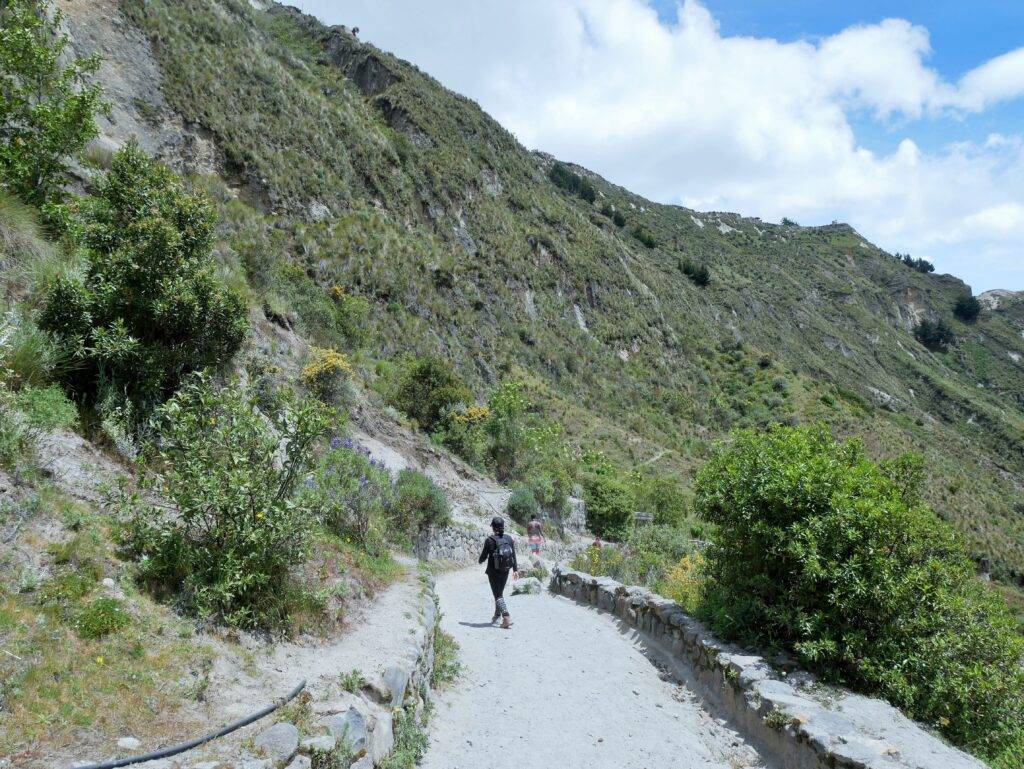
The first thing to know about this hike is that it’s no picnic. While there is a winding trail down to the crater lake, it’s primarily made of loose sand and rock that makes every step a bit precarious. Additionally, the path descends at such a steep angle that you’ll likely have to walk sideways in places to keep your balance.
For this reason, good hiking shoes are a must! This is not the place for your street sneakers or flat-soled shoes. You really need something with a good grip, and ankle support won’t hurt, either.
You can do the downhill hike in about 40 minutes at a reasonable pace, including stops for resting and/or some pictures. Despite the intensity of the hike, it is an absolutely gorgeous one, especially on a sunny day. You’ll get a fantastic view of the crater and lake all the way down, and you may even find some blossoming wildflowers along the trail.
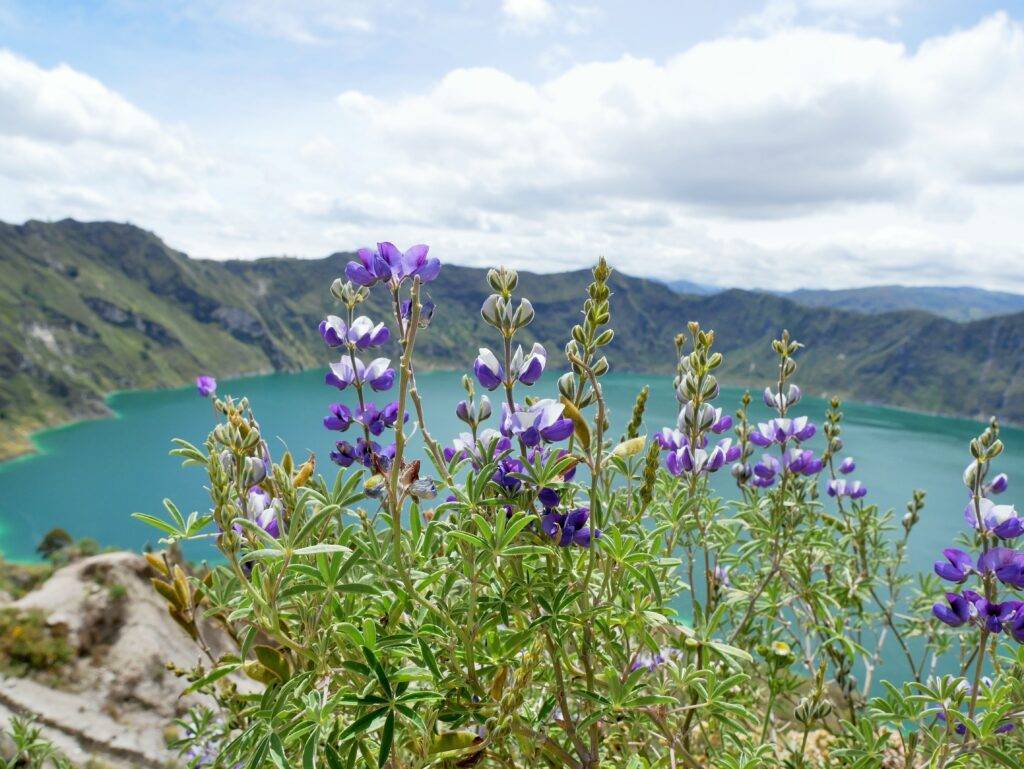
On the way, you may encounter some local vendors selling water or coca tea, which has a bit of caffeine to help you get that extra boost. Also, keep an eye out for donkeys and mules heading up to the top. They go wherever they feel like on the trail, so be sure to get out of their way if you don’t want to get stepped on!
If you don’t feel like hiking back up the crater (and who can blame you?), you do have an alternative option! At the bottom of the trail, you can rent a donkey, horse, or mule for $10 per person to take you back to the top. You’ll be required to rent at least 2 at a time, so this works best if you have a friend who wants to come with you. This takes about 30 minutes, and whoever you rent the donkeys from will accompany you to the top on foot.
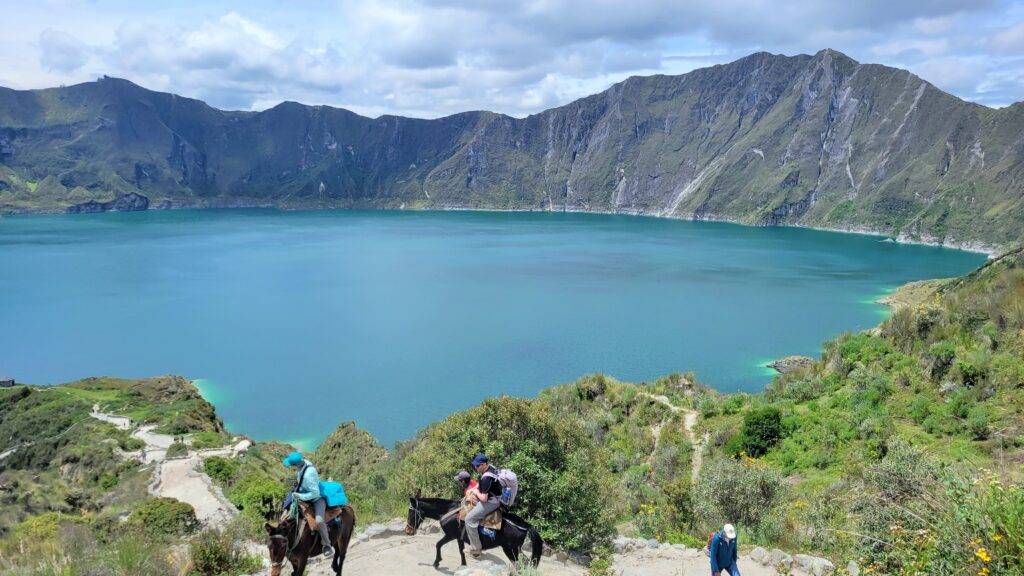
But if you do choose to hike back, you should set aside at least 80-90 minutes and bring lots of water with you! You’ll be dealing with the same slippery trail again, but it’s all uphill. Be sure to pace yourself and take breaks when needed so that you can make it safely to the top.
Enjoying the Activities On Quilotoa Crater Lake
You may be wondering, “If the hike’s that intense, is it even worth going down?” Yes! If you’re physically able, you don’t want to miss out on the activities at the lake.
While small, there is a hub on the lake shore where you can rent various watercraft, rent a campsite, and grab a snack, and most activities are fairly affordable! We thoroughly enjoyed our 30-minute kayak excursion, which cost $5 per person, but we also saw several people zipping around on motorized rafts.
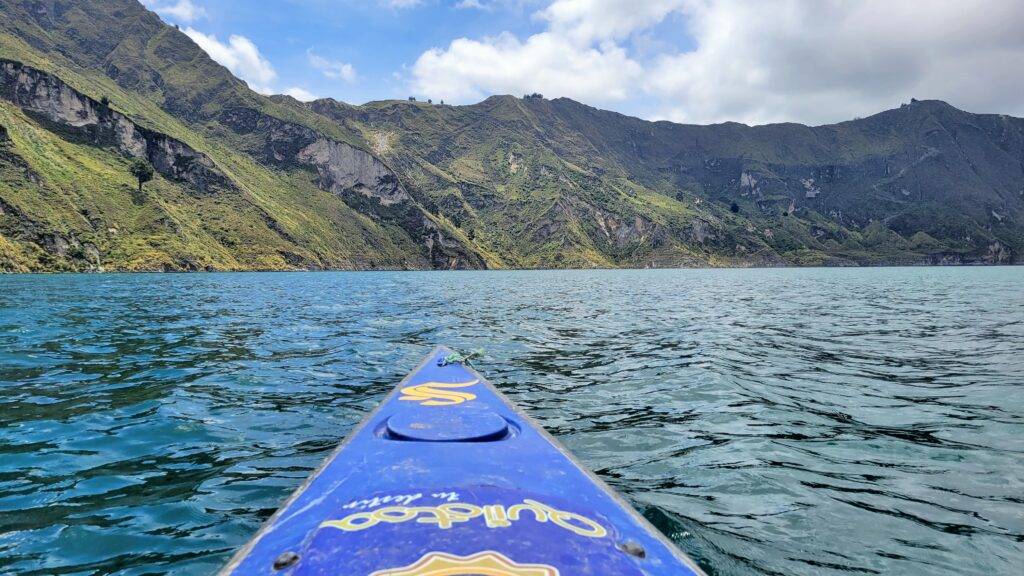
If you’re up for more walking, be sure to venture down the trails around the shoreline to see the beautiful crater from all different angles!
The one thing you can’t do here is swim. While the waters may look inviting, they are extremely cold, and the volcanic minerals in the water are very bad for your body. Additionally, this gorgeous lake drops off to 250 meters deep very quickly, so it’s not the safest swim environment all around.
Exploring the Village
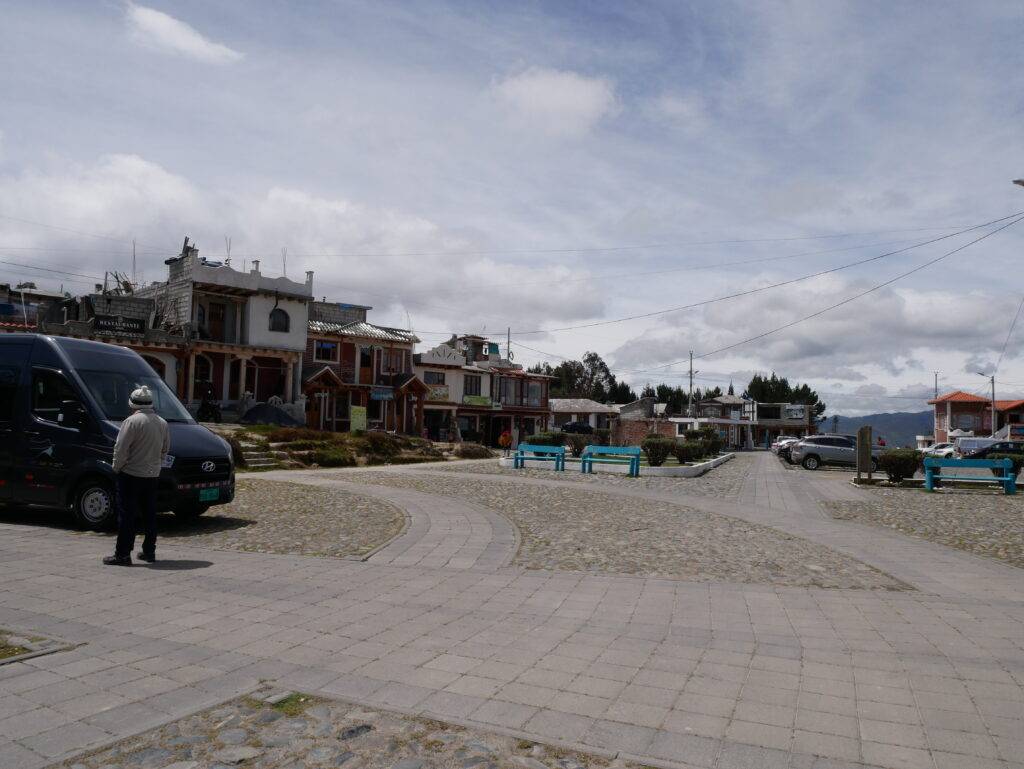
At the top of the crater, you’ll have a chance to explore Quilotoa Village, which is a fantastic spot to grab some food or souvenirs! There are many local vendors selling alpaca merchandise, like hats, scarves, blankets, ponchos, and even tiny alpaca toys! You’ll also find plenty of small cafes and eateries along the streets, where the owners entice you in with calls of “Cafe!” and “Chocolate caliente!” Depending on the weather, both of those will likely sound pretty good!
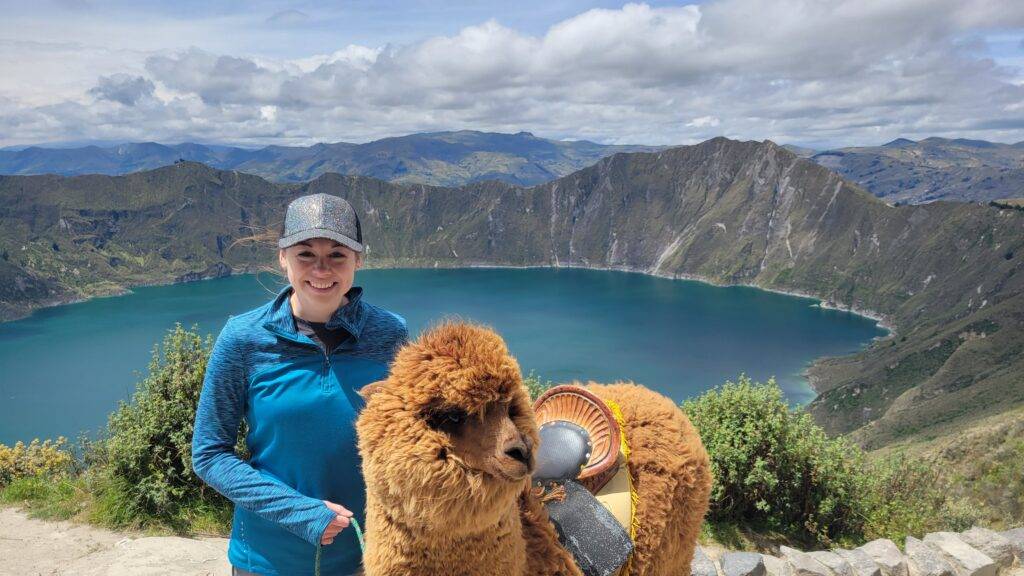
Another popular tourist attraction is the alpacas! You’ll likely find at least one person offering photo ops with the fluffy camelids. And if you’re lucky, there will even be a baby one! Photo ops with the alpacas can range from 50 cents to a couple dollars.
And if you’re feeling a little crazy (or just empathic), you can also make friends with the “street” dogs and give them some food. You’ll find quite a few pups roaming around, but they’re not necessarily wild. It’s pretty common for a family to “claim” a dog, but let it wander free during the day to find food beside the road or from a friendly hand. Obviously, be smart about it, and don’t approach any dogs that do seem territorial or aggressive.
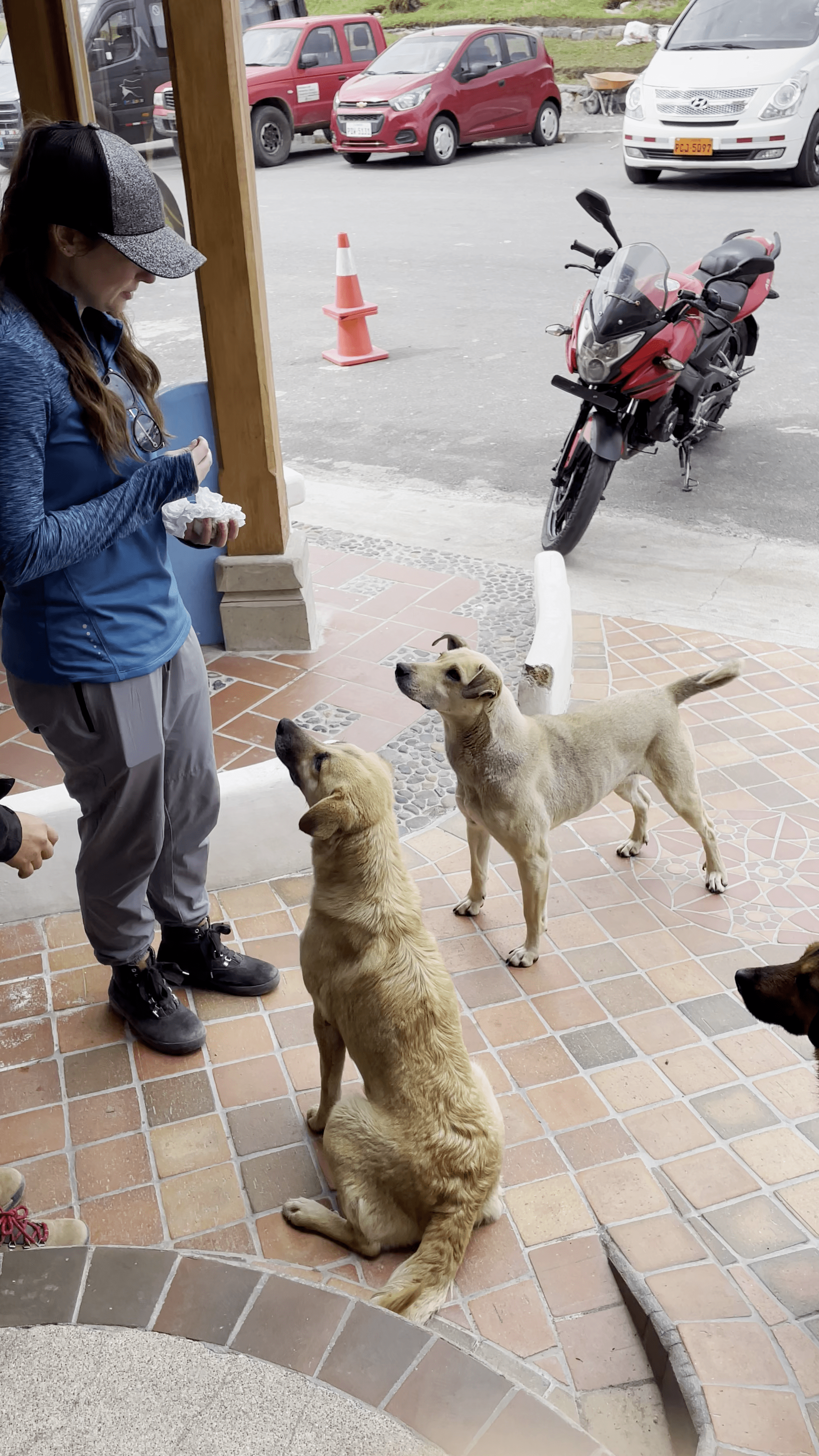
Closing Thoughts on Quilotoa Crater Lake
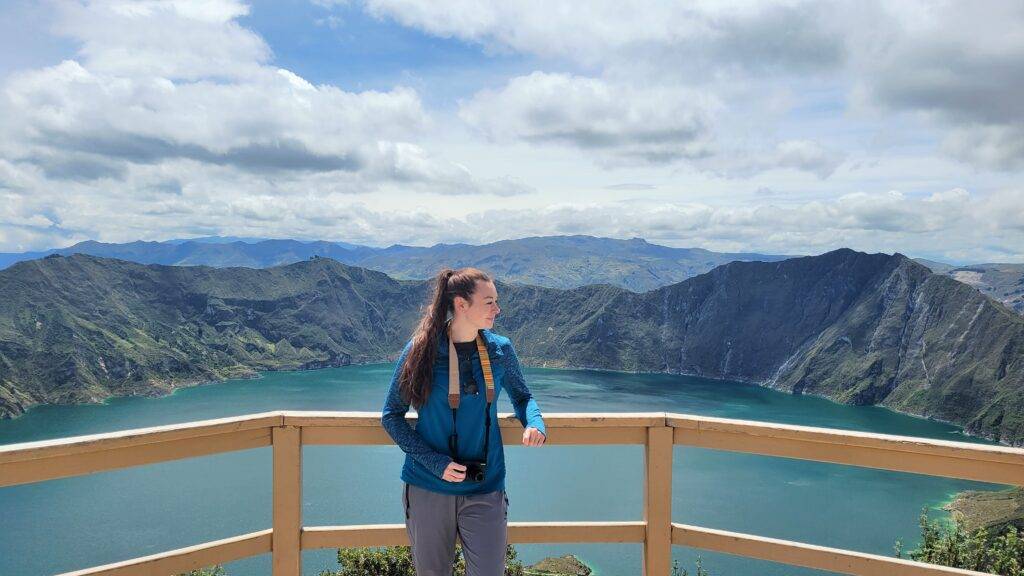
If you can work this location into your Ecuador itinerary, do it! This was one of my favorite Ecuadorian adventures outside of the Galapagos, and it’s going to stick with me for a long time. The hike was tough, but it was worth the sore knees to see those views, kayak on the lake, and experience the traditional culture of the Quechua Indian people.
You can find plenty of local tours on Viator that will assign you a knowledgeable guide and make sure you get there and back safely. Just be sure to read the reviews to make sure you get a good one.
There’s also a good chance you’ll get hungry while you’re there, so I recommend trying something new, like guinea pig, empanadas de viento, guanabana juice, and of course, Ecuadorian coffee!
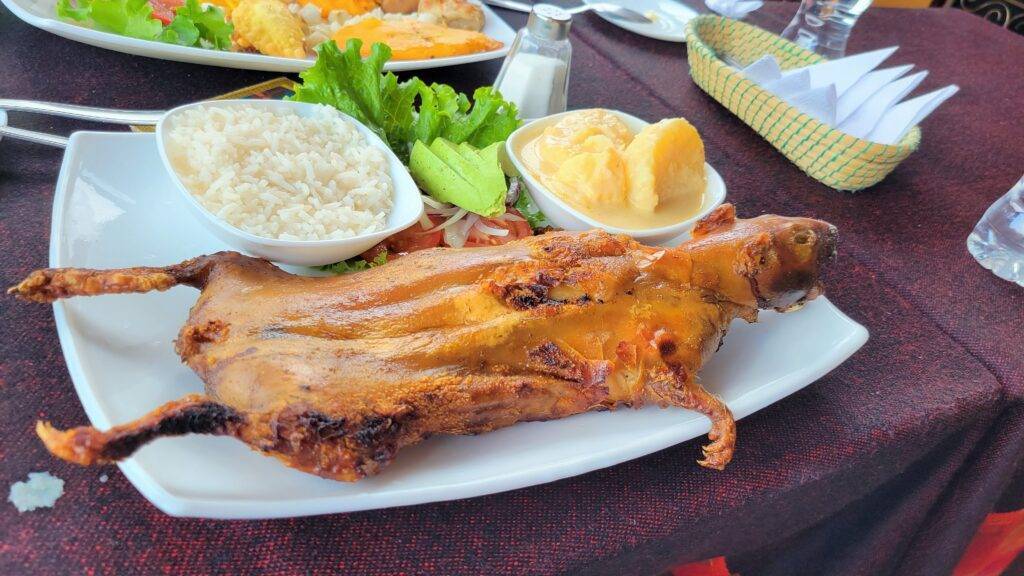
If you have questions, feel free to drop them in the comments below. And if you enjoyed this post, do me a favor and give it a like to show some support and subscribe to the blog! It’s free, and you’ll stay up to date with all the latest adventures.
Thanks for being here–it really means the world to me–and I hope you’ll be back soon for the next adventure!
Happy travels!
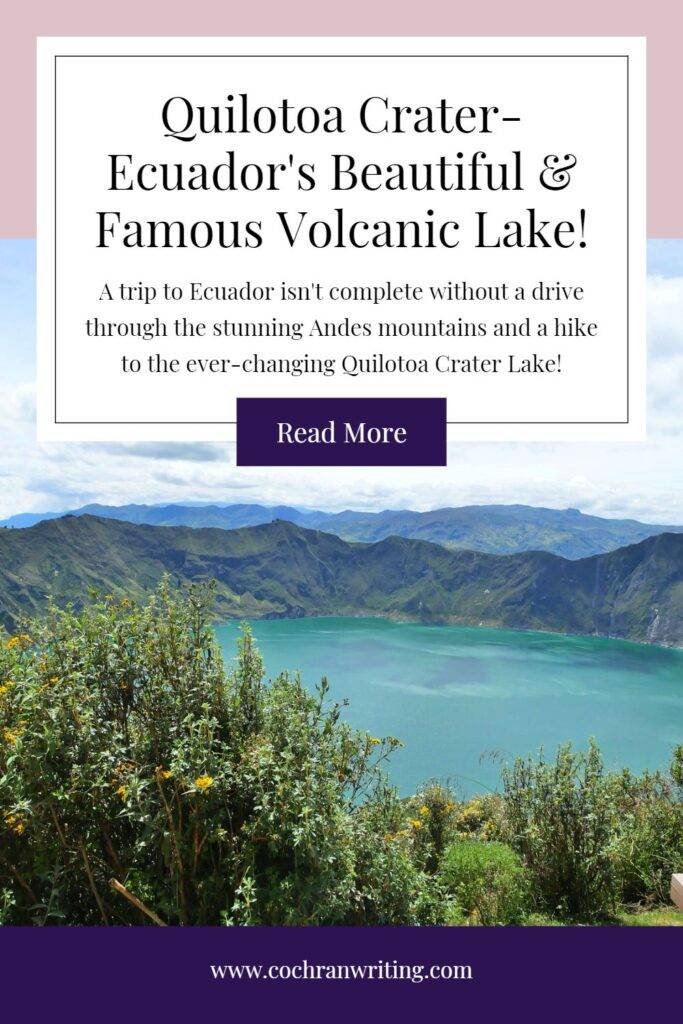
Make Vacation Planning Easier
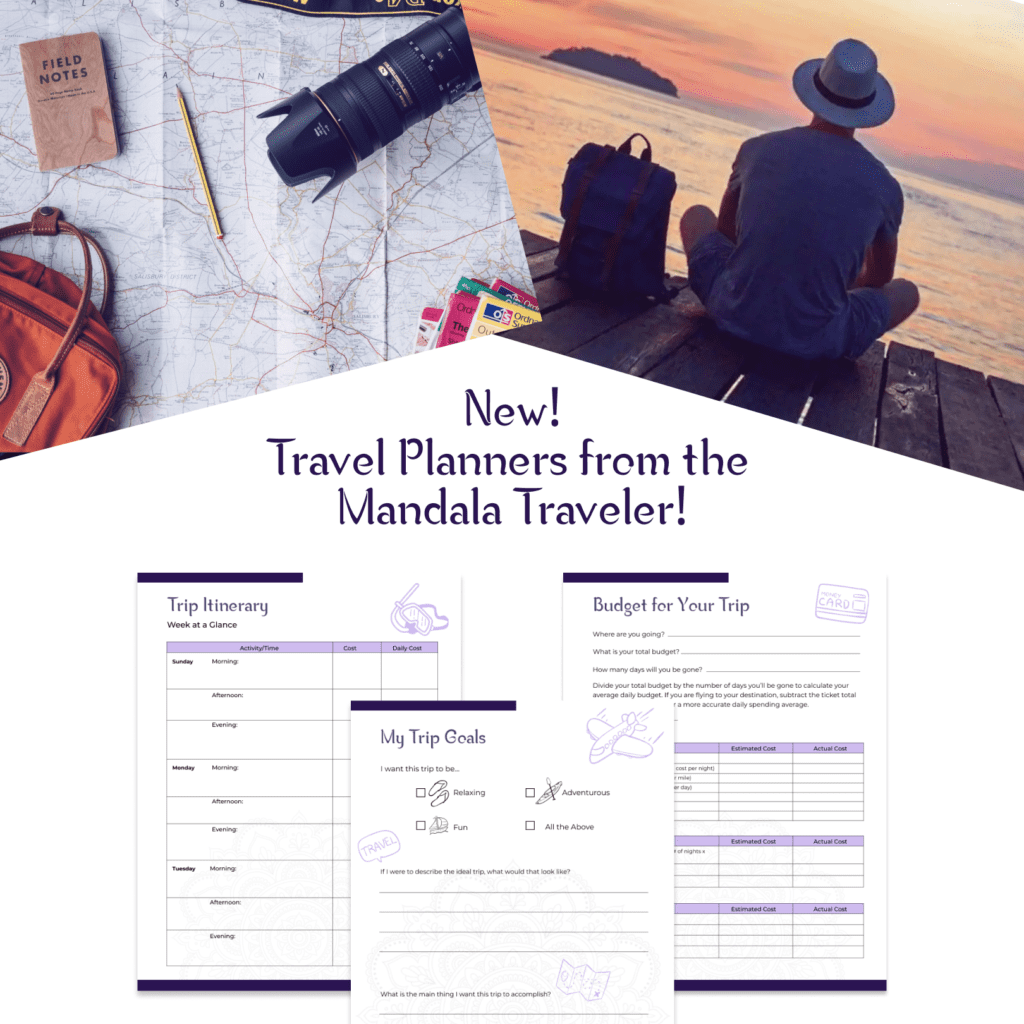
Download my Vacation Planner or Travel Blogger’s Planner today!
















